

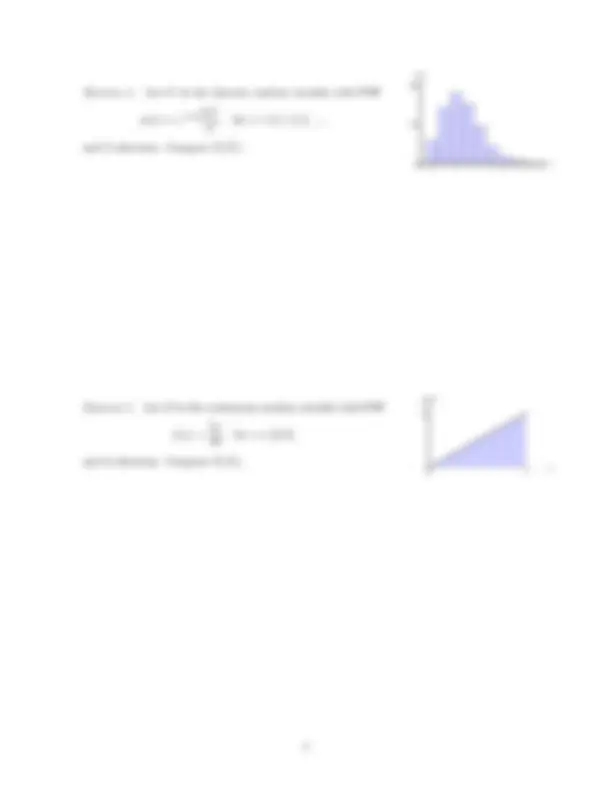
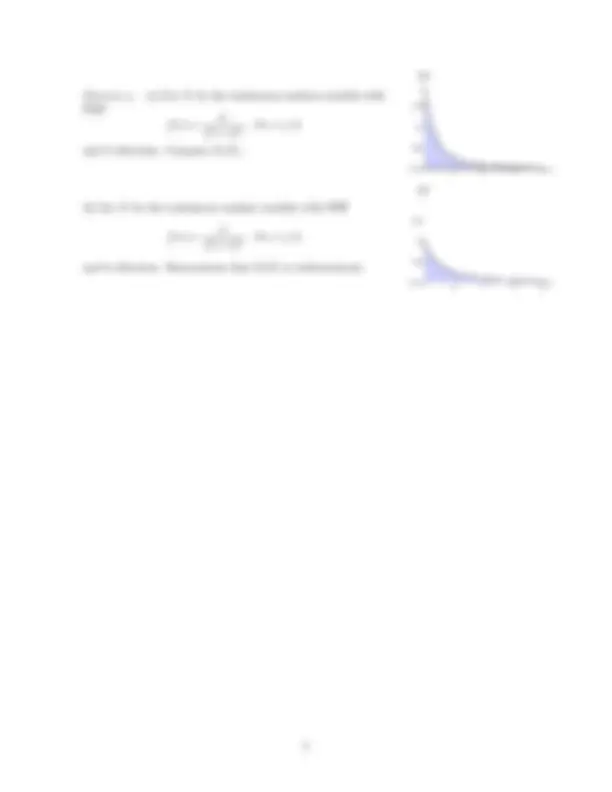
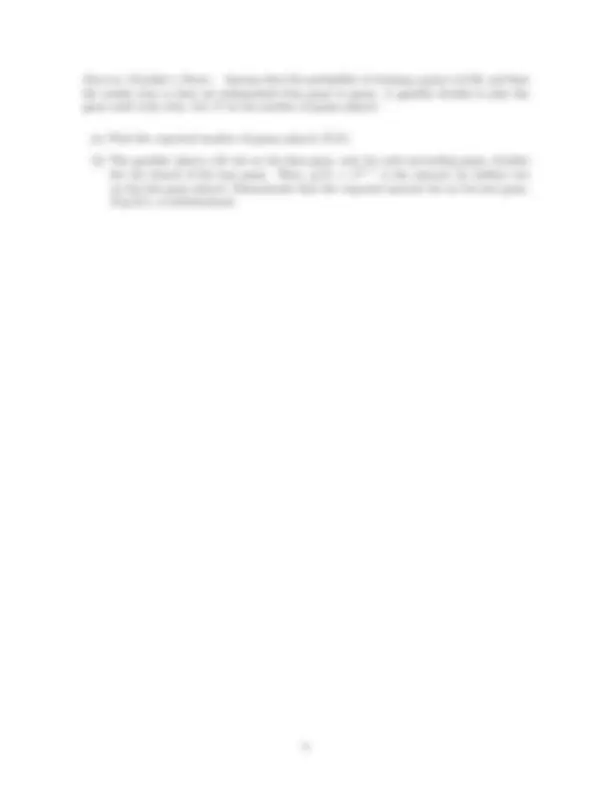
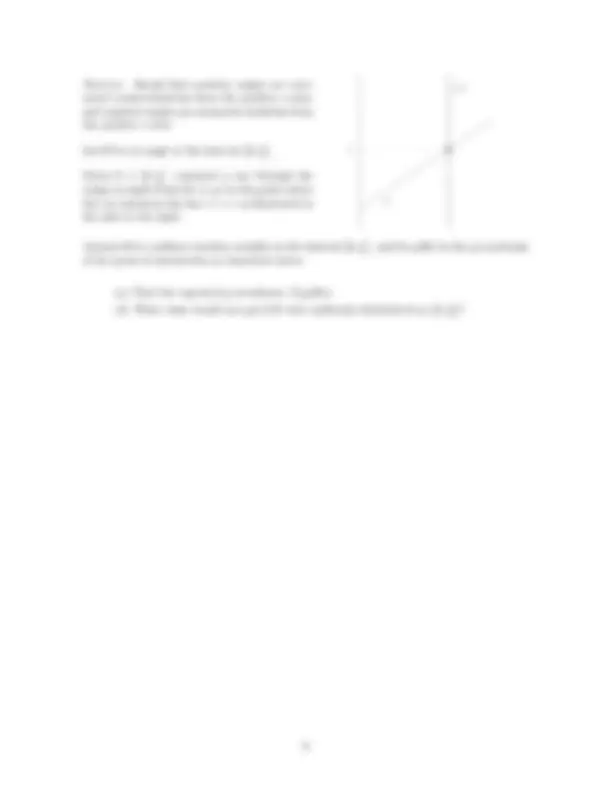
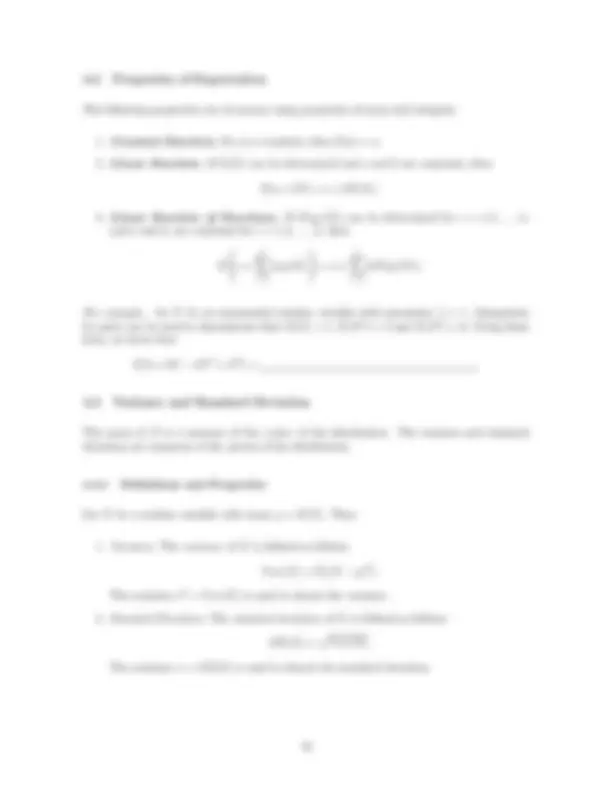
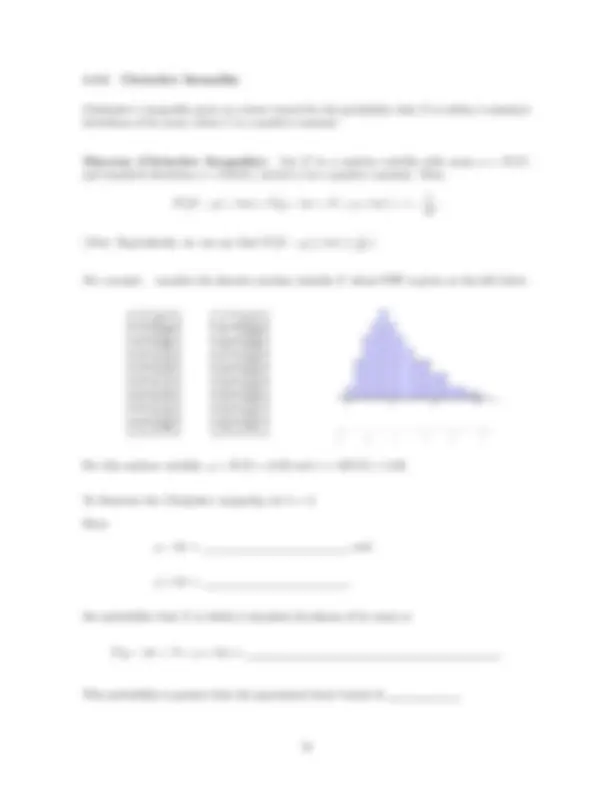
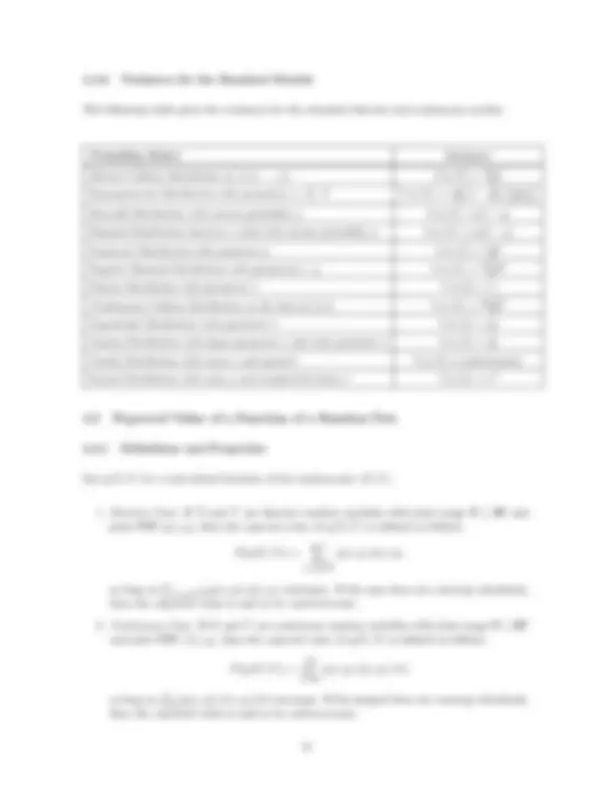
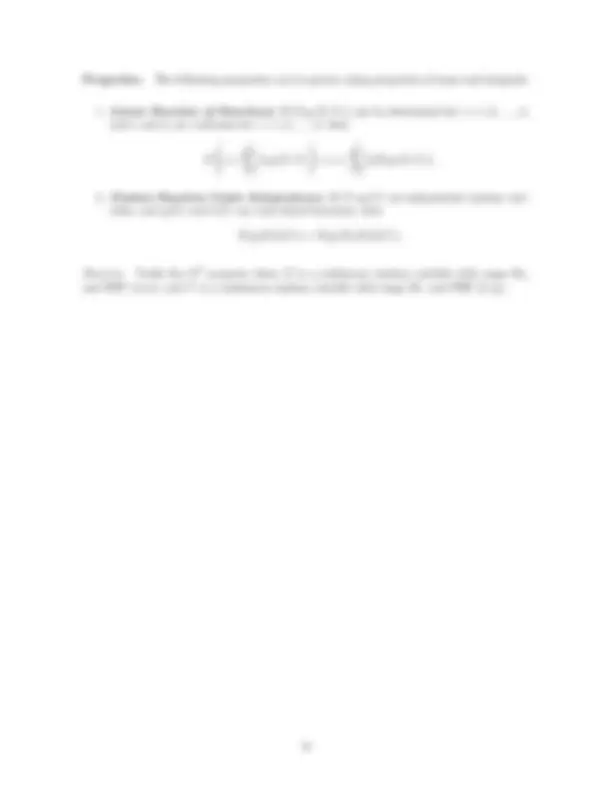
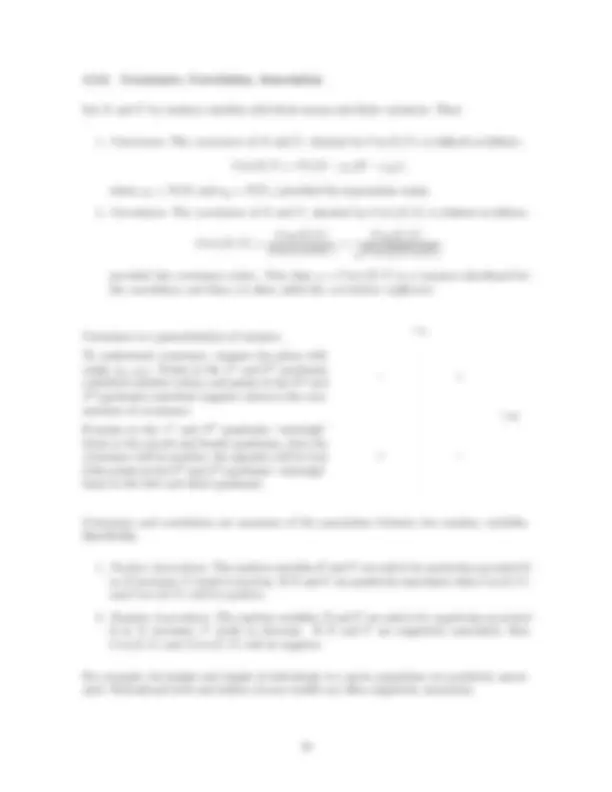
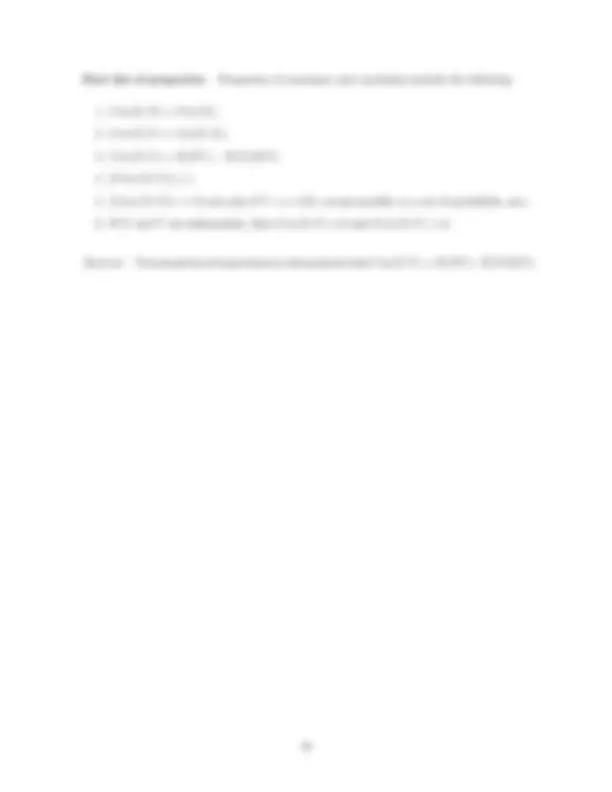

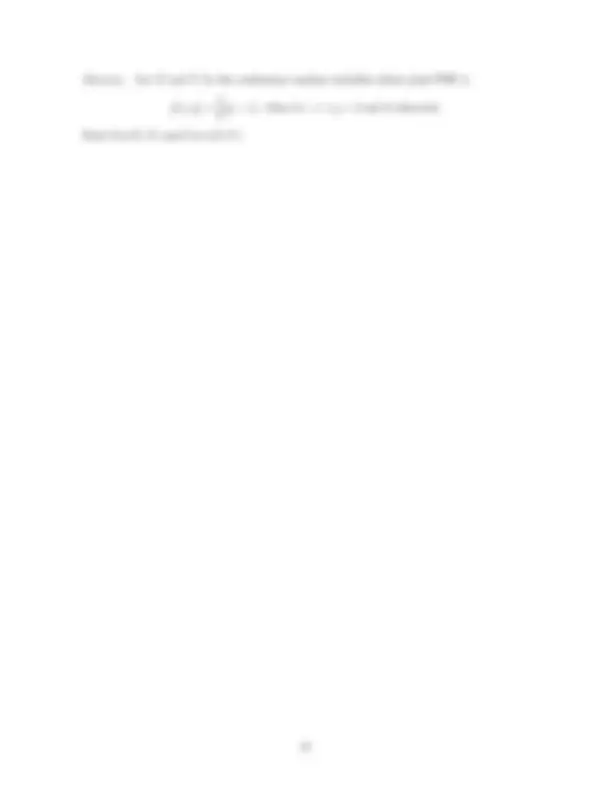
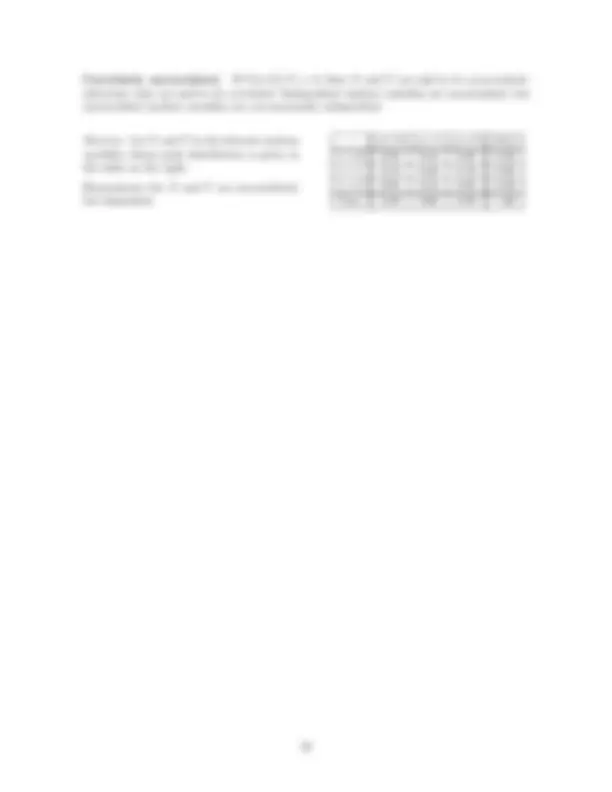
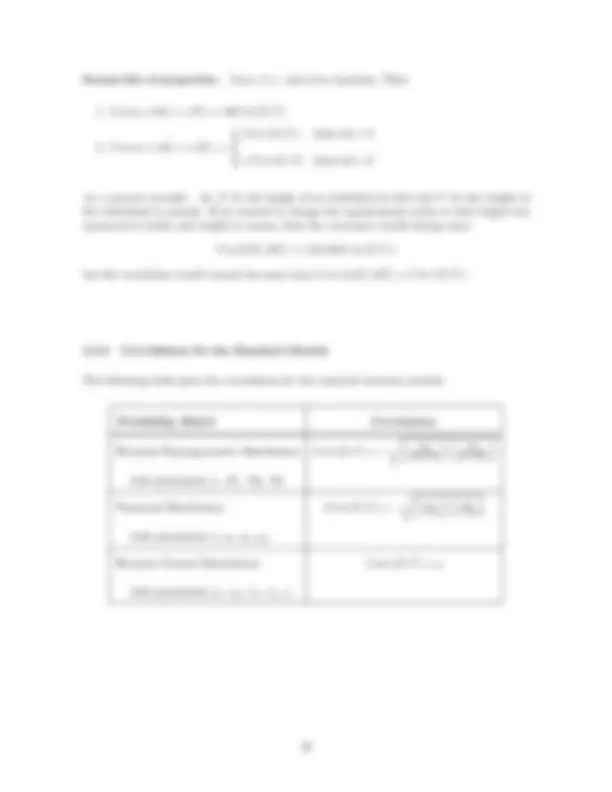
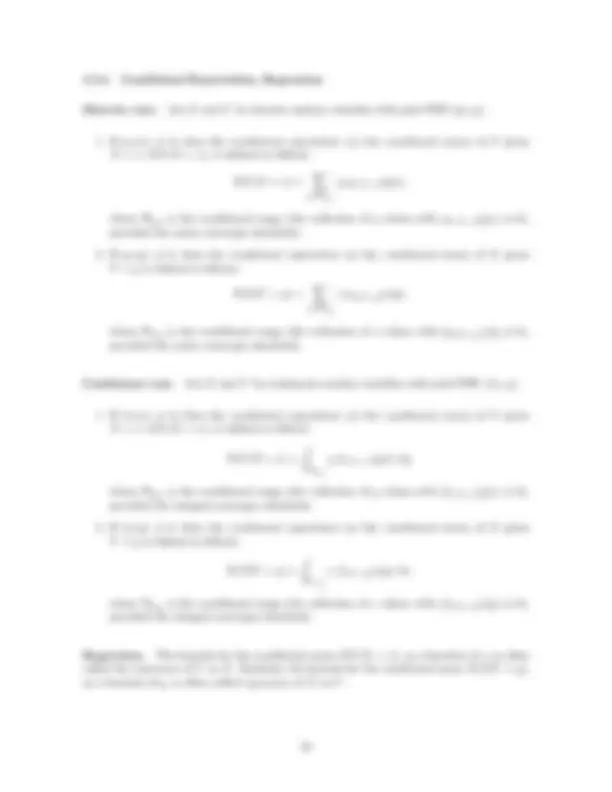
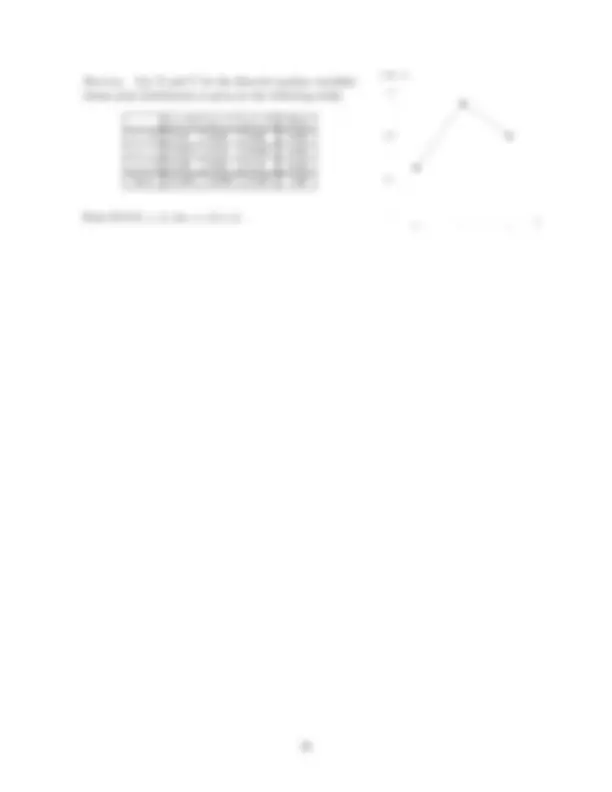
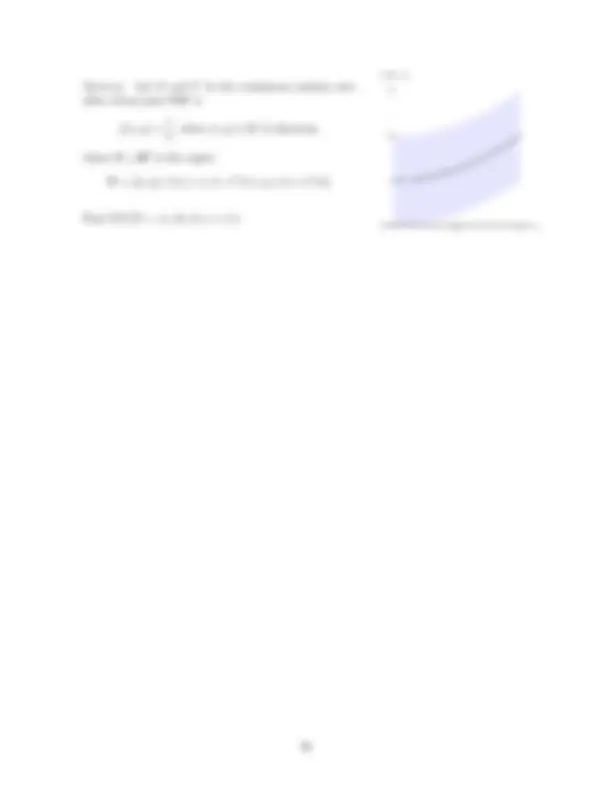
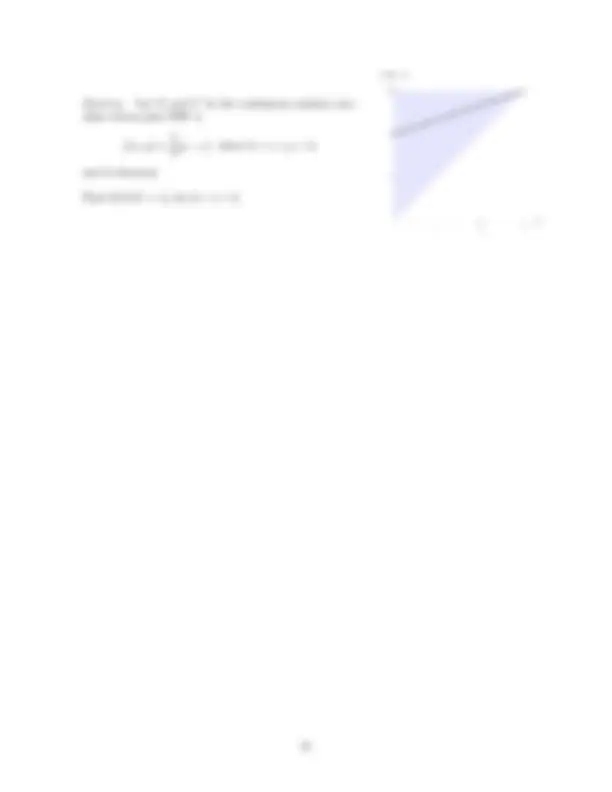
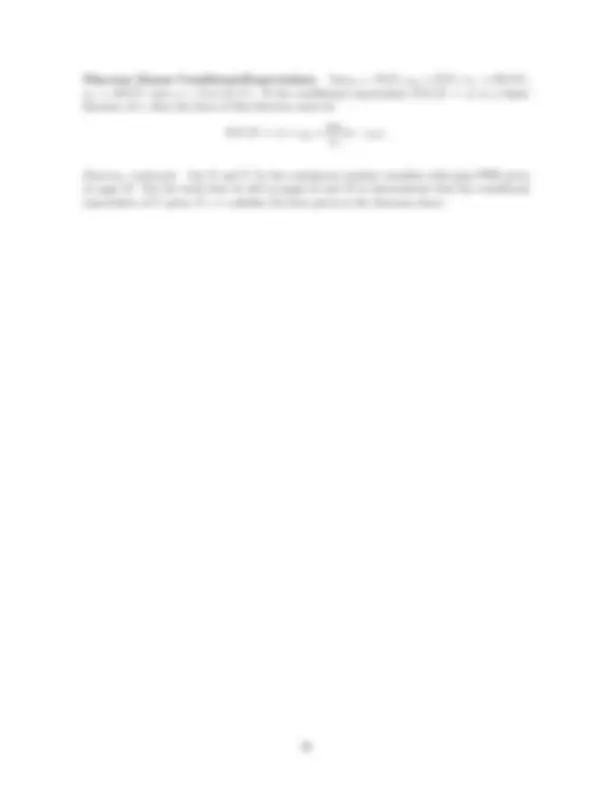
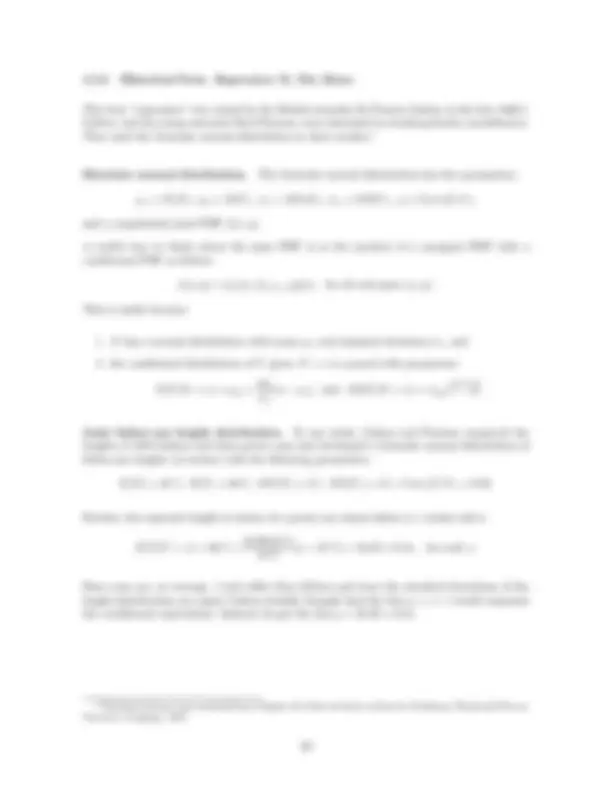
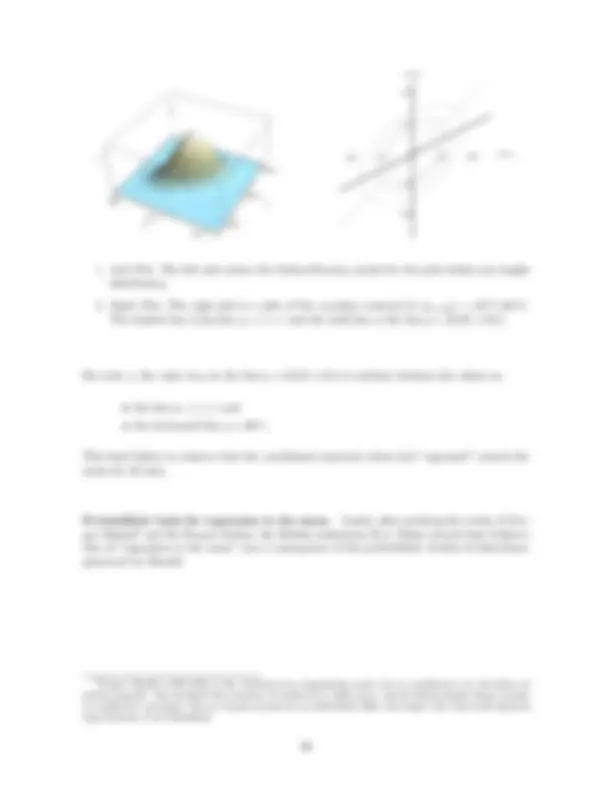
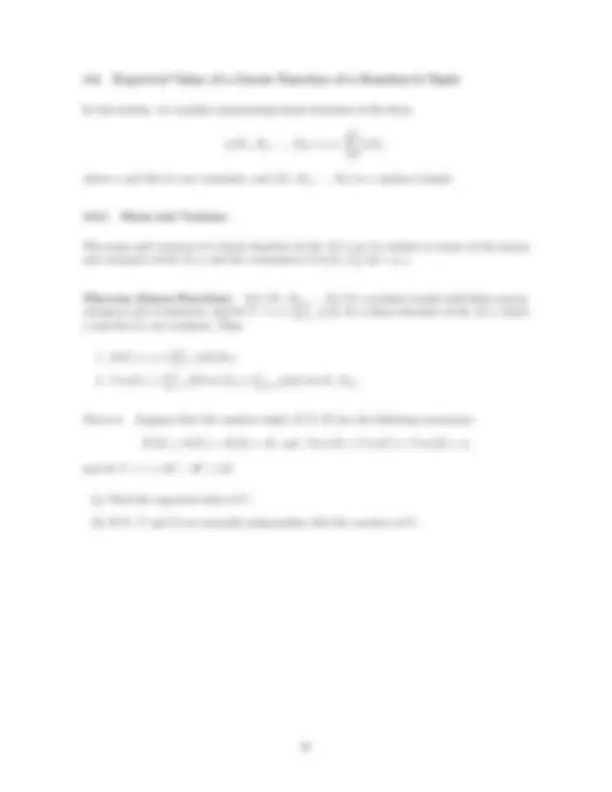
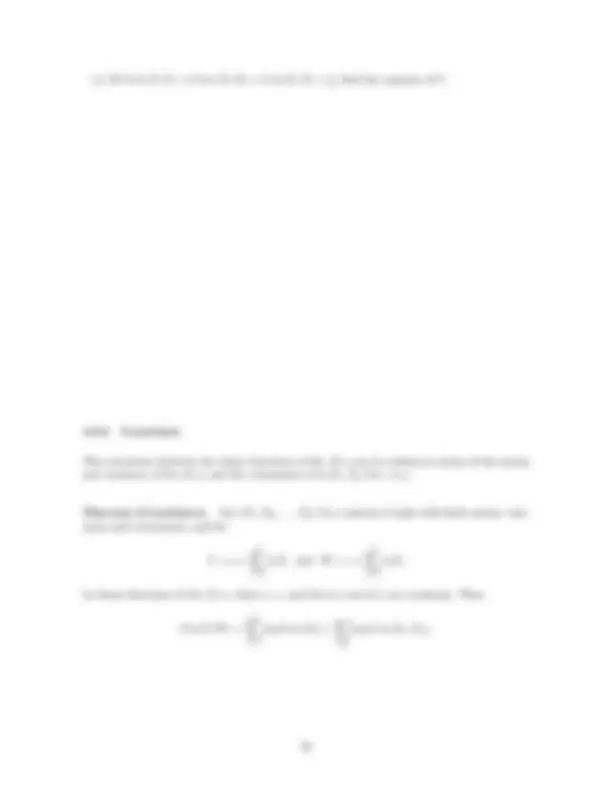
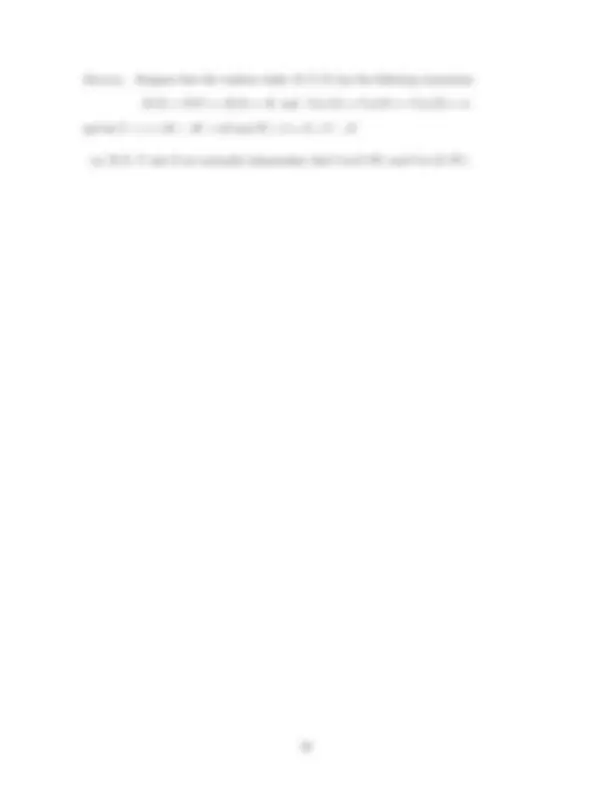

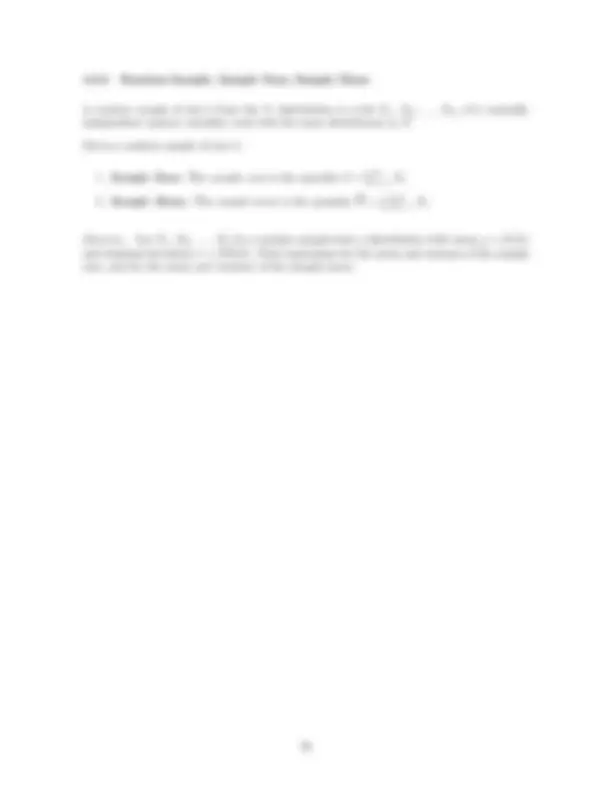
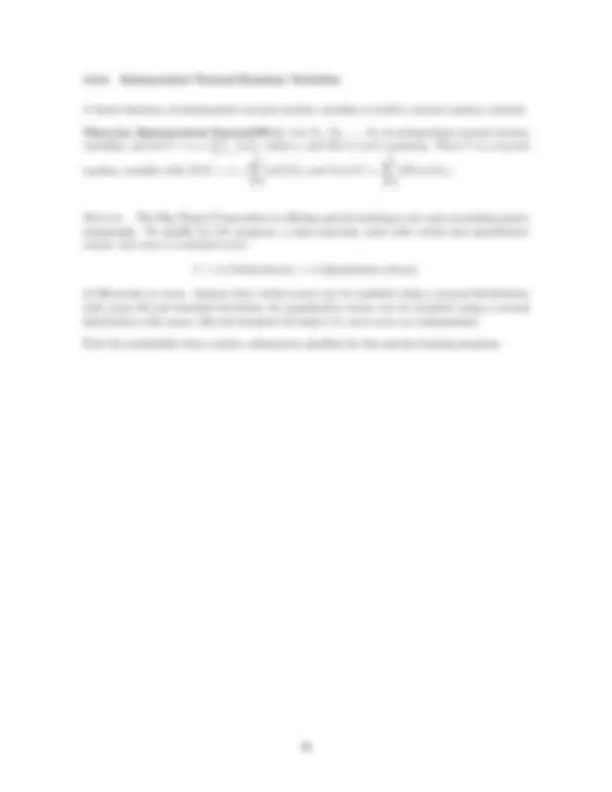
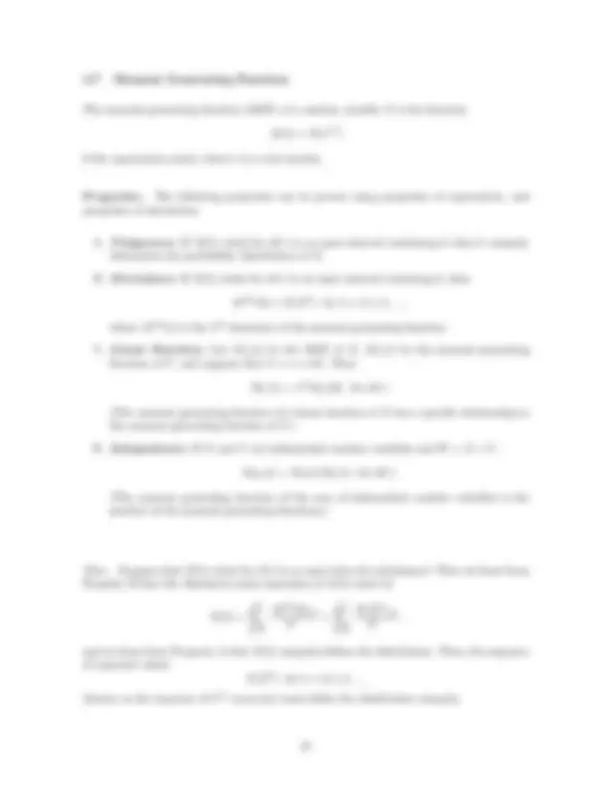




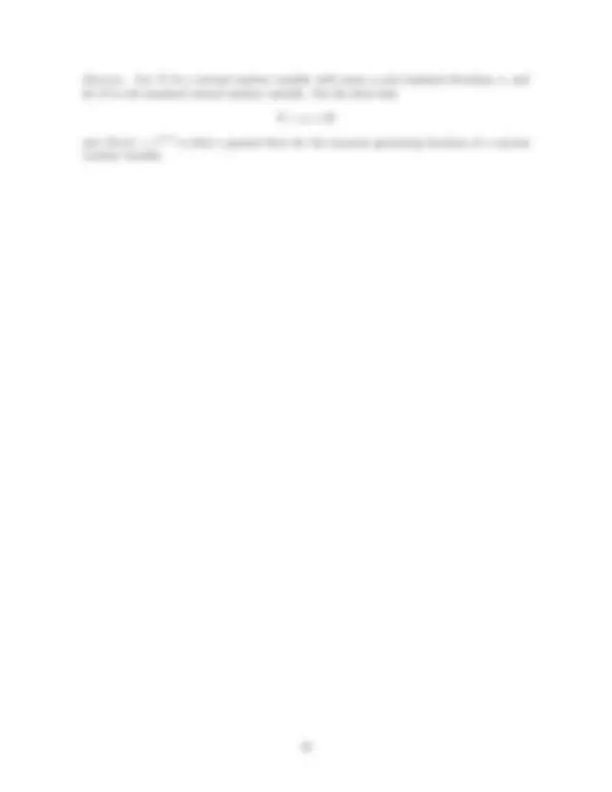




Study with the several resources on Docsity

Earn points by helping other students or get them with a premium plan


Prepare for your exams
Study with the several resources on Docsity

Earn points to download
Earn points by helping other students or get them with a premium plan
Community
Ask the community for help and clear up your study doubts
Discover the best universities in your country according to Docsity users
Free resources
Download our free guides on studying techniques, anxiety management strategies, and thesis advice from Docsity tutors
Material Type: Notes; Class: Probability; Subject: mathematics; University: Boston College; Term: Unknown 2009;
Typology: Study notes
1 / 44

This page cannot be seen from the preview
Don't miss anything!





































Exercise 2. Let X be the discrete random variable with PDF
p(x) = e−^2.^5
, for x = 0, 1 , 2 , 3 ,.. .,
and 0 otherwise. Compute E(X).
Exercise 3. Let X be the continuous random variable with PDF
f (x) =
2 x 25 , for x ∈ [0, 5],
and 0 otherwise. Compute E(X).
Exercise 4. (a) Let X be the continuous random variable with PDF f (x) =
(2 + x)^3
, for x ≥ 0,
and 0 otherwise. Compute E(X).
(b) Let X be the continuous random variable with PDF
f (x) =
(2 + x)^2
, for x ≥ 0,
and 0 otherwise. Demonstrate that E(X) is indeterminate.
Exercise. Assume that the probability of finding oil in a given drill hole is 0.30, and that the results (finding oil or not) are independent from drill hole to drill hole. An oil company drills one hole at a time. If they find oil, then they stop; otherwise, they continue. However, the company only has enough money to drill five holes. Let X be the number of holes drilled.
(a) Find the expected number of holes drilled, E(X).
(b) The company has borrowed $250,000 to buy equipment at the rate of 12% per drilling period, and have decided to pay back the loan once all drilling has been completed. Thus, g(X) = 250(1.12)X^ is the amount (in thousands of dollars) due once all drilling has been completed. Find the expected amount they will need to return, E(g(X)).
Exercise (Gambler’s Ruin). Assume that the probability of winning a game is 0.50, and that the results (win or lose) are independent from game to game. A gambler decides to play the game until (s)he wins. Let X be the number of games played.
(a) Find the expected number of games played, E(X).
(b) The gambler places a $1 bet on the first game, and, for each succeeding game, doubles the bet placed of the last game. Thus, g(X) = 2X−^1 is the amount (in dollars) bet on the last game played. Demonstrate that the expected amount bet on the last game, E(g(X)), is indeterminate.
The following properties can be proven using properties of sums and integrals:
E(a + bX) = a + bE(X).
a +
∑^ k
i=
bigi(X)
= a +
∑^ k
i=
biE(gi(X)).
For example, let X be an exponential random variable with parameter λ = 1. Integration by parts can be used to demonstrate that E(X) = 1, E(X^2 ) = 2 and E(X^3 ) = 6. Using these facts, we know that
E(5 + 3X − 4 X^2 + X^3 ) =.
The mean of X is a measure of the center of the distribution. The variance and standard deviation are measures of the spread of the distribution.
4.4.1 Definitions and Properties
Let X be a random variable with mean μ = E(X). Then
V ar(X) = E((X − μ)^2 ).
The notation σ^2 = V ar(X) is used to denote the variance.
SD(X) =
V ar(X).
The notation σ = SD(X) is used to denote the standard deviation.
Exercise. Use the properties of expectation to demonstrate the following properties:
4.4.2 Chebyshev Inequality
Chebyshev’s inequality gives us a lower bound for the probability that X is within k standard deviations of its mean, where k is a positive constant.
Theorem (Chebyshev Inequality). Let X be a random variable with mean μ = E(X) and standard deviation σ = SD(X), and let k be a positive constant. Then
P (|X − μ| < kσ) = P (μ − kσ < X < μ + kσ) > 1 −
k^2
(Note: Equivalently, we can say that P (|X − μ| ≥ kσ) ≤ (^) k^12 .)
For example, consider the discrete random variable X whose PDF is given on the left below.
x p(x) x p(x) 1 0.02 9 0. 2 0.06 10 0. 3 0.10 11 0. 4 0.12 12 0. 5 0.14 13 0. 6 0.12 14 0. 7 0.10 15 0. 8 0.08 16 0.
For this random variable, μ = E(X) = 6.59 and σ = SD(X) = 3.33.
To illustrate the Chebyshev inequality, let k = 2.
Since
μ − 2 σ = , and
μ + 2σ = ,
the probability that X is within 2 standard deviations of its mean is
P (μ − 2 σ < X < μ + 2σ) =.
This probability is greater than the guaranteed lower bound of.
4.4.3 Variances for the Standard Models
The following table gives the variances for the standard discrete and continuous models:
Probability Model: Variance: Discrete Uniform Distribution on { 1 , 2 ,... , n} V ar(X) = n (^2) − 1 12 Hypergeometric Distribution with parameters n, M , N V ar(X) = n MN
( 1 − MN
) (^ N −n N − 1
)
Bernoulli Distribution with success probability p V ar(X) = p(1 − p) Binomial Distribution based on n trials with success probability p V ar(X) = np(1 − p) Geometric Distribution with parameter p V ar(X) = 1 −p 2 p Negative Binomial Distribution with parameters r, p V ar(X) = r(1 p− 2 p) Poisson Distribution with parameter λ V ar(X) = λ (Continuous) Uniform Distribution on the interval (a, b) V ar(X) = (b−a)
2 12 Exponential Distribution with parameter λ V ar(X) = (^) λ^12 Gamma Distribution with shape parameter α and scale parameter λ V ar(X) = (^) λα 2 Cauchy Distribution with center a and spread b V ar(X) is indeterminate Normal Distribution with mean μ and standard deviation σ V ar(X) = σ^2
4.5.1 Definitions and Properties
Let g(X, Y ) be a real-valued function of the random pair (X, Y ).
E(g(X, Y )) =
(x,y)∈R
g(x, y) p(x, y),
as long as
(x,y)∈R |g(x, y)|^ p(x, y) converges. If the sum does not converge absolutely, then the expected value is said to be indeterminate.
E(g(X, Y )) =
R
g(x, y) f (x, y) dA,
as long as
R |g(x, y)|^ f^ (x, y)^ dA^ converges. If the integral does not converge absolutely, then the expected value is said to be indeterminate.
Exercise. Let X and Y be the discrete random variables whose joint distribu- tion is given in the table on the right.
Find E(|X − Y |).
y = 0 y = 1 y = 2 y = 3 y = 4 Sum: x = 0 0. 10 0. 04 0. 02 0. 01 0. 01 0. 18 x = 1 0. 04 0. 10 0. 04 0. 02 0. 01 0. 21 x = 2 0. 02 0. 04 0. 10 0. 04 0. 02 0. 22 x = 3 0. 01 0. 02 0. 04 0. 10 0. 04 0. 21 x = 4 0. 01 0. 01 0. 02 0. 04 0. 10 0. 18 Sum: 0. 18 0. 21 0. 22 0. 21 0. 18 1. 00
Exercise. A stick of length 5 has a coordinate system as shown below:
The stick is broken at random in two places. Let X and Y be the locations of the two breaks and assume that X and Y are independent uniform random variables on the interval (0, 5). Find the expected length of the middle segment.
First list of properties. Properties of covariance and correlation include the following
Exercise. Use properties of expectation to demonstrate that Cov(X, Y ) = E(XY )−E(X)E(Y ).
Exercise. Let X and Y be the discrete random variables whose joint distribution is given in the table on the right.
Find Cov(X, Y ) and Corr(X, Y ).
y = 0 y = 1 y = 2 Sum: x = 0 0.05 0.05 0.10 0. x = 1 0.15 0.10 0.07 0. x = 2 0.30 0.10 0.08 0. Sum: 0.50 0.25 0.25 1.